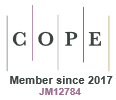Just Accepted
This article has been peer reviewed and accepted for publication. It is in production and has not been edited, so may differ from the final published form.
Choice of companion legume influences lamb liveweight output and grain yields in a dual use perennial wheat/legume intercrop system
Abstract
Context: Perennial cereals are being developed for dual roles of forage and grain production. Like other cereals, perennial wheat (PW) forage requires mineral supplementation if grazed by ruminants. Aims: To investigate the effect on liveweight gain in lambs grazing PW/legume intercrops in comparison to grazing PW with a mineral supplement. Effects of intercropping and impact of grazing on PW grain yield were also investigated. Methods: Lambs (14-week-old, n=144) grazed one of four treatments, namely PW with a mineral supplement (PW+Min) or PW intercropped with either lucerne (Medicago sativa) (PW+L), subterranean clover (Trifolium subterraneum) (PW+C), or French serradella (Ornithopus sativus) (PW+S) for 12 weeks. Treatments were arranged in a randomised block design with six replicates. Following grazing, grain yield from each treatment was compared with an ungrazed control, upon maturity. Key results: Intercropping with either subterranean clover or French serradella increased carrying capacity and total liveweight grain, similar to the PW+Min treatment and supported a higher stocking rate compared with the PW+L treatment. Sodium concentration was approximately 10-fold higher in the herbage of subterranean clover and serradella compared with PW, and 5-fold higher than lucerne. Grain yields from intercropping were lower compared with PW+Min due to the reduction in perennial wheat density. However, proportionally, PW grain yield was improved in the PW+S and PW+L treatments with a Net Effect Ratio (NER) >1 Conclusions: Increased feed availability from the provision of forages, such as subterranean clover and French serradella, enabled greater liveweight output, through greater carrying capacity of grazing lambs when compared with a PW+L diet, however these were not different to PW+Min. Improved Na intake is also implicated in this result, however not confirmed by this study. Grain yields were not affected by grazing, although they were reduced by intercropping. However, the comparative improvement in PW grain yield (NER) in combination with a compatible legume, along with increased grazing days, highlight the potential of intercropping where more than one product is produced in a multi-functional, dual-purpose perennial grain system. Implications: The comparative improvement in grain yield from intercropping coupled with increased liveweight change supports the use of compatible legume intercrops in dual-purpose perennial grain systems.
AN24246 Accepted 12 February 2025
© CSIRO 2025



